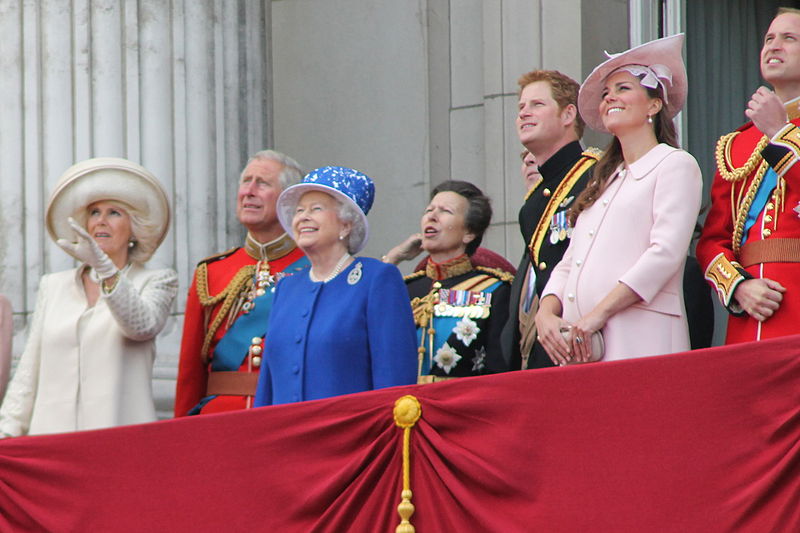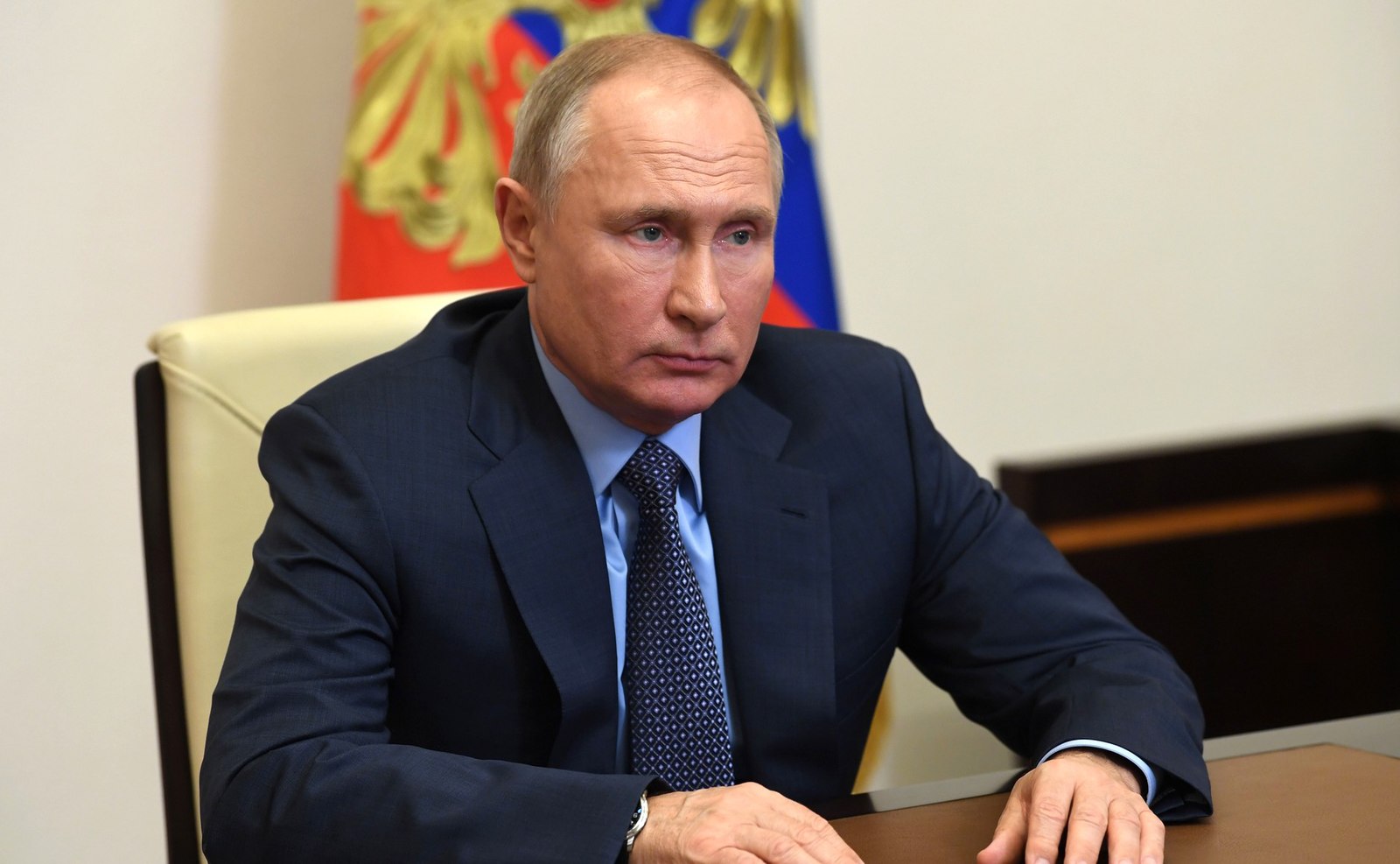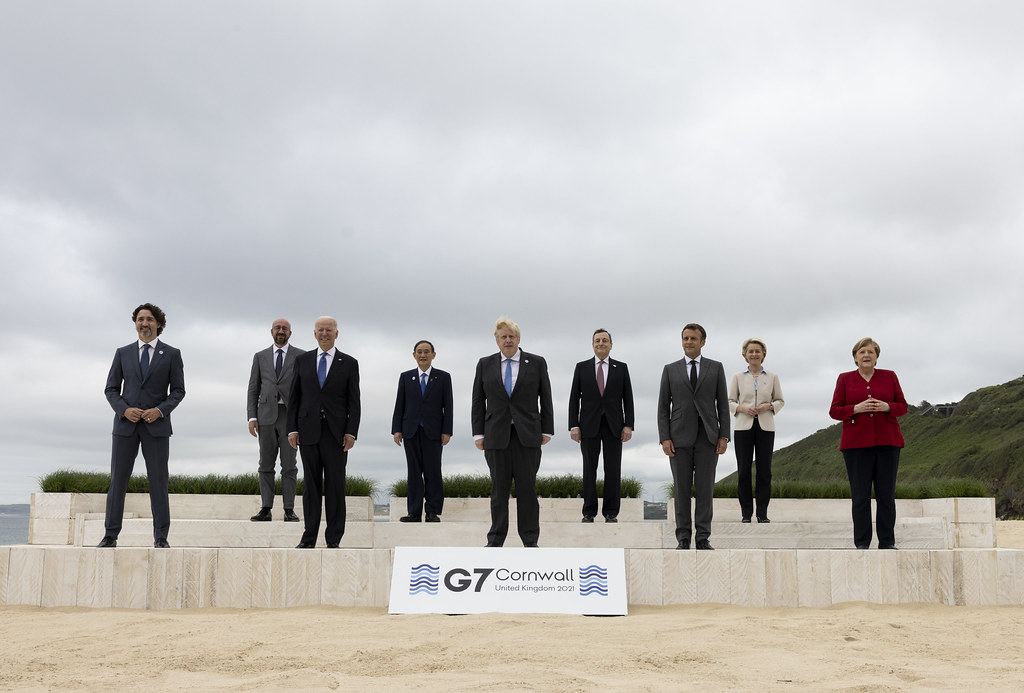In this insightful piece, Upasana explores the transformation of Bharat Mata, from a unifying colonial symbol to a contested figure post-independence. Examining the impact of India’s printing press and Hindu god prints, Upasana delves into the complexities of Bharat Mata’s evolution from a nationalist icon to a symbol embodying both secular and religious dimensions. Uncover the shifting perceptions of femininity and Indianness through the lens of calendar art, providing a concise yet profound understanding of Bharat Mata’s role in shaping national identity in a diverse, post-independence India.
Similar to Marianne — national personification of the French Republic made popular during the French Revolution — Bharat Mata or the personified version of the Indian nation-state continues to represent the country. Even though the political significance of the Indian goddess has changed significantly in post-independence India with majoritarian religious groups laying claim over the deity, the initial intentions of her creators were to unify colonised South Asia. This article aims to analyse how the development of printing press in the country and the increased familiarity of India’s Hindu masses with calendar art led to the dissemination of Bharat Mata’s imagery alongside the larger cultural impacts of the same. Moreover, this essay also elaborates upon how Bharat Mata, after India’s independence, became a Hindu nationalist figure who failed to embody the secular values that her initial creators had envisioned her to.
The Development of Printing Press in India
God prints or printed images of Hindu deities became common in India after 1878 when The Calcutta Art Studio and Chitrashala Press were set up in Bengal and Maharashtra, respectively. Around a decade and a half later, in 1894, famous Indian Painter, Raja Ravi Varma along with his brother, Raja Varma established the Ravi Varma Fine Art Lithographic Press in the outskirts of Bombay (Mumbai). With these began the mass-production and reproduction of images of Hindu gods in the country. Consequently, the visual culture of 19th century India was largely shaped and regulated by these pictures. The god prints were “hand-made and mass-produced, local and exotic, religious and commercial.[1]”
The visual representations of Hindu gods went on to democratise Hinduism — a religion which, under British rule, came to divide its people through the varna[2] system — by allowing Hindus to purchase the prints which were inexpensive and within almost everyone’s budget. This further allowed Hindus to create their own spaces of worship within their homes and workplaces, thus rendering “Hinduism more intimate and domestic.[3]” Alongside making devotion easier for people, these prints also made it feasible for individuals from certain “low castes” to revere the gods they believed in; something that the practice of temple worship had previously prohibited them from.[4]
The mass-reproduction of images enabled numerous Hindus to practise their faith with their caste, class, or gender no longer coming in the way of their religious veneration. The affordability of these coupled with their portability or flexibility equalised Hinduism.[5] This way, the technological mass-production of god prints prompted Hindus to view themselves as a collective which, in turn, unified a religious group that was initially known to be heterogeneous[6] and accordingly caused the homogenisation of India’s visual culture during the late 19th century.[7]
The Conceptualisation and Popularisation of Bharat Mata
The creation, availability and mass-production of the images of gods impacted Indian culture in various other significant ways which eventually prompted the iconisation of the country as a goddess. The Ravi Varma Fine Art Lithographic Press and The Calcutta Art Studio played a crucial role in popularising the image of the Hindu goddess and ultimately leading to her becoming ‘Bharat Mata.’
After the 1890s, Ravi Varma’s paintings became available as mass-produced prints with images of goddesses finding a place in most spaces of worship or puja rooms within Hindu households. Ravi Varma further “transformed the Indian imaginary from the realm of fantasy to a historicised realist chronotope…‘gave’ India its Gods in a real form…[8]” Both Ravi Varma and Calcutta Art Studio Hinduised realism in spite of the western influence on the same[9] and the depiction of Bharat Mata as a realistic figure enhanced the admiration and devotion that the Hindus had for her.
The increasing adoration for the Hindu goddess and the marketability of the images of Indian deities gave rise to the “calendar art stereotype” which was influenced by the different notions of “femininity” and “Indianness.[10]” Ravi Varma is said to be the “father of calendar art” for the role his artworks played in shaping this stereotype.[11] Alongside his oleographs, even the Calcutta Art Studio’s mythological pictures portrayed Hindu goddesses as central figures of worship. By the early twentieth century, as a result, calendar art in India, came to be dominated by the images of these goddesses.
The figure of Bharat Mata owed her creation to Ravi Varma’s nationalist project under which he modified Indian art form; it was he who premised national iconography on feminine images.[12] Nonetheless, his art soon began to be considered as ‘kitsch’ by nationalists in Bengal when they came across the works of Abanindranath Tagore. The rationale behind that was simple: Tagore epitomised the Indian style more effectively as compared to Ravi Varma whose works still came across as westernised. Keeping that in mind, Bharat Mata’s first visual representation is officially considered to be the one painted by Tagore in 1905, a year before Ravi Varma’s death. Tagore’s depiction of the Indian goddess was different from that of her previous images — she was “the mother of the country” as opposed to being the cause of rising aggressive nationalism, a secular figure instead of a religious one.[13]
The Indian Goddess in Popular Culture
In terms of calendar art, one of the most well-known renditions of Bharat Mata in pre-independence India became one in which freedom fighter, Bhagat Singh, was shown to be offering his head to the personified nationalistic goddess. The first calendar image of Singh with Bharat Mata was printed in 1931 after which, his popularity among the Indian masses made the print mainstream. However, the irony of this was that Bhagat Singh had openly declared himself to be an atheist.[14] Additionally, he had returned to wearing his Sikh turban prior to being executed, but in most of his images with Bharat Mata, he was still shown to be dressed in western clothing while offering his head on a platter to her.[15] Therefore, even if the intention of this calendar image was to portray him as a patriotic figure, it failed to depict Singh’s political views accurately — which was the main reason behind his popularity within the Indian masses — as well as the history behind both his life and death.
Furthermore, in 1957, an important Bollywood film, Mother India was released in India. While Bharat Mata had so far been a revered figure, the film turned her into a regular village woman who later became a matriarch. The depiction of the woman protagonist, Radha as an ideal Indian woman, which was perceived as “an impressive and emotionally moving metaphor for the submission to the nation-state,” imbued a sense of collective morality within the Indian masses.[16] The sacrosanct goddess was, therefore, humanised.
The iconography of Mother India and Ravi Varma’s Hindu goddesses both perpetuated stereotypes about ideal Indian women.[17] The film, in a way, resulted in Indian women getting typecast into the roles of mothers and wives who would embrace femininity like Radha by “performing pujas…donating alms, playing the sitar, adorning themselves in a typical ‘feminine’ act of vanity…[18]” These images and ideologies about Indian women had, of course, been created and propagated by Ravi Varma prior to being portrayed in motion pictures. Nonetheless, even if Indian women started being equated to Bharat Mata after the release of Mother India, the goddess continued to be worshipped by Hindus throughout the country.
Another notable impact that the personification of Bharat Mata had on Indian culture was the creation of temples for the goddess. The first among these was built in the state of Banaras by 1924 and included an “image in which the nation as mother took on an entity of a detailed physical map.[19]” However, while Tagore had imagined her to be a secular figure, she, towards the end of the 20th century, came to represent just the Hindus. Geeti Sen elucidates this while giving the example of her trip to Banaras where she found a wall painting of Bharat Mara created during Women’s Day, 2000. In that, the goddess held a saffron flag instead of India’s tricolour one. As Sen proclaims, “…her new iconography indicates that she now represents one political party.[20]”
Conclusion
While certain critics referred to Ravi Varma’s art as something that served the interests of Indian nationalists, many considered Tagore’s representation of the goddess to be more secular. It is, however, difficult to say whether the figure of Bharat Mata was meant to be viewed as a goddess or a human being because her representations have been in the form of both. Nevertheless, it can be established that Bharat Mata remains a strong figure in India even today with the first woman prime minister of the country, Indra Gandhi, being portrayed as a form of the nationalist goddess. Yet, even though India, ever since its independence in 1947, has claimed to be a country where individuals belonging to various religious groups can exist as a part of a single nation, Bharat Mata, as of today, does not represent all Indians.
[1] Pinney, Christopher. Photos of the Gods: The Printed Image and Political Struggle in India. Reaktion Books, 2004.
[2] The caste system in Hinduism which divides all Hindus into four hierarchical categories: Brahmins, Kshatriyas, Vaishyas, and Shudras.
[3] Davis, Richard. Gods in Print: Masterpieces of India’s Mythological Art. Mandala Publishing, 2012.
[4] Inglis, Stephen R. “Master, Machine and Meaning: Printed Images in Twentieth-Century India.” University of California Press, edited by Ruth B. Phillips and Christopher B. Steiner, 1999, pp. 122–39.
[5] Inglis, Stephen R. “Master, Machine and Meaning: Printed Images in Twentieth-Century India.” University of California Press, edited by Ruth B. Phillips and Christopher B. Steiner, 1999, pp. 122–39.
[6] Davis, Richard. Gods in Print: Masterpieces of India’s Mythological Art. Mandala Publishing, 2012.
[7] Thakurta, Tapati Guha. “Women as ‘Calendar Art’ Icons: Emergence of Pictorial Stereotype in Colonial India.” Economic and Political Weekly, vol. 26, no. 43, 1991, pp. 91–99. www.jstor.org/stable/4398221.
[8] Pinney, Christopher. Photos of the Gods: The Printed Image and Political Struggle in India. Reaktion Books, 2004.
[9] Thakurta, Tapati Guha. “Women as ‘Calendar Art’ Icons: Emergence of Pictorial Stereotype in Colonial India.” Economic and Political Weekly, vol. 26, no. 43, 1991, pp. 91–99. www.jstor.org/stable/4398221.
[10] Thakurta, Tapati Guha. “Women as ‘Calendar Art’ Icons: Emergence of Pictorial Stereotype in Colonial India.” Economic and Political Weekly, vol. 26, no. 43, 1991, pp. 91–99. www.jstor.org/stable/4398221.
[11] Pinney, Christopher. Photos of the Gods: The Printed Image and Political Struggle in India. Reaktion Books, 2004.
[12] Thakurta, Tapati Guha. “Women as ‘Calendar Art’ Icons: Emergence of Pictorial Stereotype in Colonial India.” Economic and Political Weekly, vol. 26, no. 43, 1991, pp. 91–99. www.jstor.org/stable/4398221.
[13] Sen, Geeti. “Iconising the Nation: Political Agendas.” India International Centre, vol. 29, 2003, pp. 154–75. www.jstor.org/stable/23005824.
[14] Sen, Geeti. “Iconising the Nation: Political Agendas.” India International Centre, vol. 29, 2003, pp. 154–75. www.jstor.org/stable/23005824.
[15] Pinney, Christopher. Photos of the Gods: The Printed Image and Political Struggle in India. Reaktion Books, 2004.
[16] Schulze, Brigitte. “The Cinematic ‘Discovery of India’: Mehboob’s Re-Invention of the Nation in Mother India.” Social Scientist, vol. 30, no. 9/10, Association for the Study of African American Life and History, Sept. 2002, p. 72. https://doi.org/10.2307/3517959.
[17] Thakurta, Tapati Guha. “Women as ‘Calendar Art’ Icons: Emergence of Pictorial Stereotype in Colonial India.” Economic and Political Weekly, vol. 26, no. 43, 1991, pp. 91–99. www.jstor.org/stable/4398221.
[18] Thakurta, Tapati Guha. “Women as ‘Calendar Art’ Icons: Emergence of Pictorial Stereotype in Colonial India.” Economic and Political Weekly, vol. 26, no. 43, 1991, pp. 91–99. www.jstor.org/stable/4398221.
[19] Gupta, Charu. “The Icon of Mother in Late Colonial North India: ‘Bharat Mata’, ‘Matri Bhasha’ and ‘Gau Mata.’” Economic and Political Weekly, vol. 36, 2001, pp. 4291–99. www.jstor.org/stable/4411354.
[20] Sen, Geeti. “Iconising the Nation: Political Agendas.” India International Centre, vol. 29, 2003, pp. 154–75. www.jstor.org/stable/23005824.
Featured Image: A Bharathamatha statue at Kanyakumari, or Cape Comorin, the southern-most coast of India. Courtesy Balurbala (CC BY-SA 4.0)





